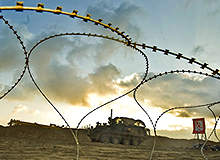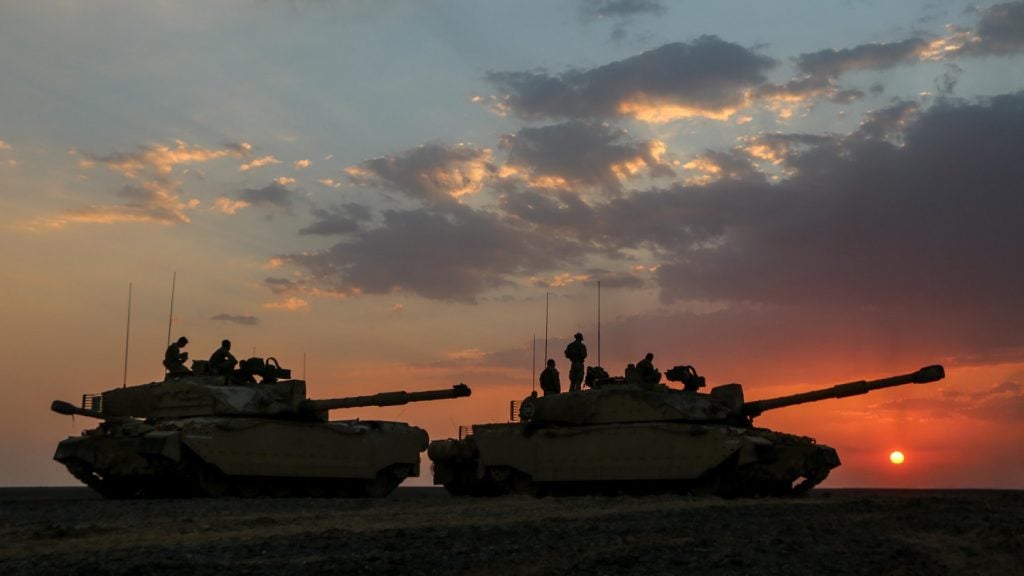
The US is keen to modernise its existing weapon systems, but the rising unit cost of defence systems conflicts with the country’s plans to decrease its procurement budget. According to the latest research from iCD Research, unit costs, combined with the expected fall in the nation’s defence expenditure over 2011-15 will stunt the growth of the US defence industry.
Over the 2011-15 forecast period, the largest military machine in the world is expected to reduce its defence expenditure by a large margin. Several wars and modernisation initiatives drove defence expenditure during the review period of 2006-10 and are expected to continue to do so in the future, if to a lesser extent.
One budget set to experience substantial growth is homeland security as the US acts to secure itself against terrorist threats, organised crime and immigration. Despite being the largest defence industry in the world, US defence imports increased in 2009 due to an increase in the procurement of military hardware from foreign suppliers. The ongoing weak global economic conditions mean several large US defence firms are keen to sell off certain non-profitable units, providing an opportunity for foreign firms to enter the market.
US defence expenditure to fall by $40bn
US defence expenditure, estimated at $740bn in 2010, recorded a compound annual growth rate of 4.00% during the review period. However, due to the growing fiscal deficit of the country, domestic military expenditure is expected to register a compound annual rate of change of -1.40% during the forecast period.
US defence expenditure in 2015 is estimated at approximately $40bn less than in 2010.
See Also:
Although the total defence spending of the country is likely to decrease during the forecast period, factors such as the potential nuclear threats posed by North Korea and Iran, modernisation initiatives undertaken by the country, ongoing military operations, and strategies to maintain its military supremacy and protect its allies will continue to drive the US defence budget. Cumulatively, the country is projected to spend $3.45tn on its armed forces during the forecast period.
How well do you really know your competitors?
Access the most comprehensive Company Profiles on the market, powered by GlobalData. Save hours of research. Gain competitive edge.

Thank you!
Your download email will arrive shortly
Not ready to buy yet? Download a free sample
We are confident about the unique quality of our Company Profiles. However, we want you to make the most beneficial decision for your business, so we offer a free sample that you can download by submitting the below form
By GlobalDataDuring the review period, the country allocated an average of 4.8% of its gross domestic product (GDP) for defence. However, the defence expenditure of the country as a percentage of GDP is expected to decline to 3.9% by 2015, due to the increasing financial constraints faced by the nation as a consequence of the global economic crisis.
The largest defence industry in the world
Despite being the largest defence industry in the world, US defence imports increased in 2009 due to an increase in the procurement of military hardware from foreign suppliers. This trend is likely to continue during the forecast period, as the nation focuses on collaborations with foreign manufacturers and the modernisation of its existing weapons systems.
Despite its highly developed defence industrial base, the nation partners with foreign defence firms such as EADS, Thales and BAE Systems in the manufacture of defence systems such as aircraft and missiles. During the review period, the UK, Canada and Switzerland emerged as the three largest arms suppliers to the country, while aircraft, armoured vehicles and artillery accounted for the majority of defence imports.
Stunted growth
The country is keen to modernise its existing weapon systems, but the rising unit cost of defence systems conflicts with the country’s plans to decrease its procurement budget. Indeed, the cost of military hardware is increasing due to the rising cost of R&D and skilled labour shortages, particularly in the design, engineering and manufacturing sectors. Rising unit costs, combined with the expected fall in the nation’s defence expenditure over the forecast period, will inevitably lead to a reduction in defence procurement as the government cancels some of its acquisition plans.
The US Government has already cancelled the development of multiple-kill vehicles (MKVs), advanced interceptor missiles that destroy incoming missiles and decoys. Consequently, defence firms will take greater risks and accept lower profits on the limited number of available government contracts. This is likely to lead to layoffs, tougher negotiations with suppliers and customers, and efforts to cut expenses across the board.
Growing homeland security spending
In order to counter the threats posed by global terrorist organisations, organised crime gangs and cross-border infiltration, the nation’s homeland security budget is forecast to reach $47bn in 2015. As the country seeks to enhance its aviation and border security, demand for equipment relating to these categories will increase.
Further opportunities are expected to arise as the US invests in communication systems, the modernisation of its aviation, naval and land defence systems and the enhancement of its nuclear defence capabilities.
Multiple entry routes for foreign firms
The ongoing weak global economic conditions have had a significant impact on many US defence companies.
As a result, defence firms such as Lockheed Martin and Northrop Grumman are keen to sell off certain non-profitable units. However, foreign investors remain attracted to the US defence market due to a decline in the value of the dollar.
Moreover, investors willing to enter the market often partner with a domestic defence firm to develop and manufacture a defence product, or establish a joint venture. For example, DRS Sonar Systems was jointly established in the US by Thales and DRS Technologies in 2007. In addition, investors can gain access to the world’s largest defence market by offering defence equipment or subcomponents directly to the country.
To purchase the full version of ‘The US Defence Industry – Market Opportunities and Entry Strategies, Analyses and Forecasts to 2015’, please click here.
iCD Research is a full-service market research consultancy providing both online and offline research capabilities. Our areas of expertise include online research, qualitative and quantitative research, custom approaches, and actionable insights. Our capabilities provide a one-stop research and analysis service with full-spectrum consulting, from problem recognition and conducting fieldwork to the delivery of strategic recommendations. We deliver our expertise across a broad range of industry sectors and product lifecycle areas. From product innovation to brand management and CRM, we offer full service research and analysis that drives loyalty and lifetime value.






